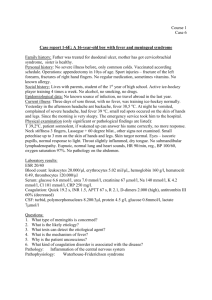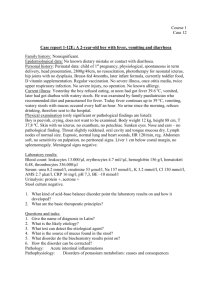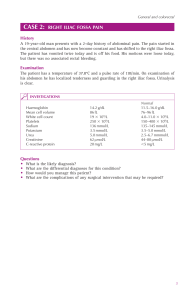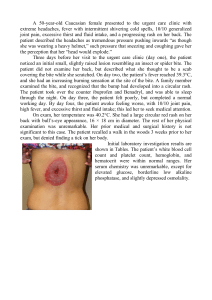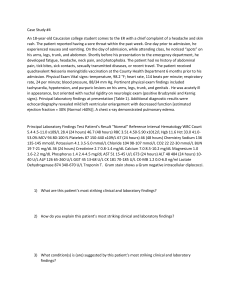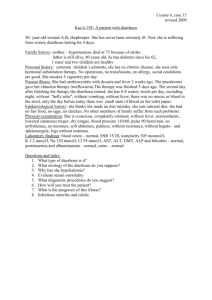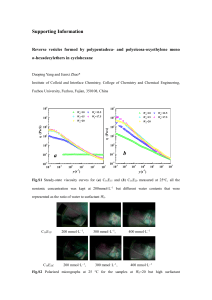Case study: Patient with diarrhoea
advertisement
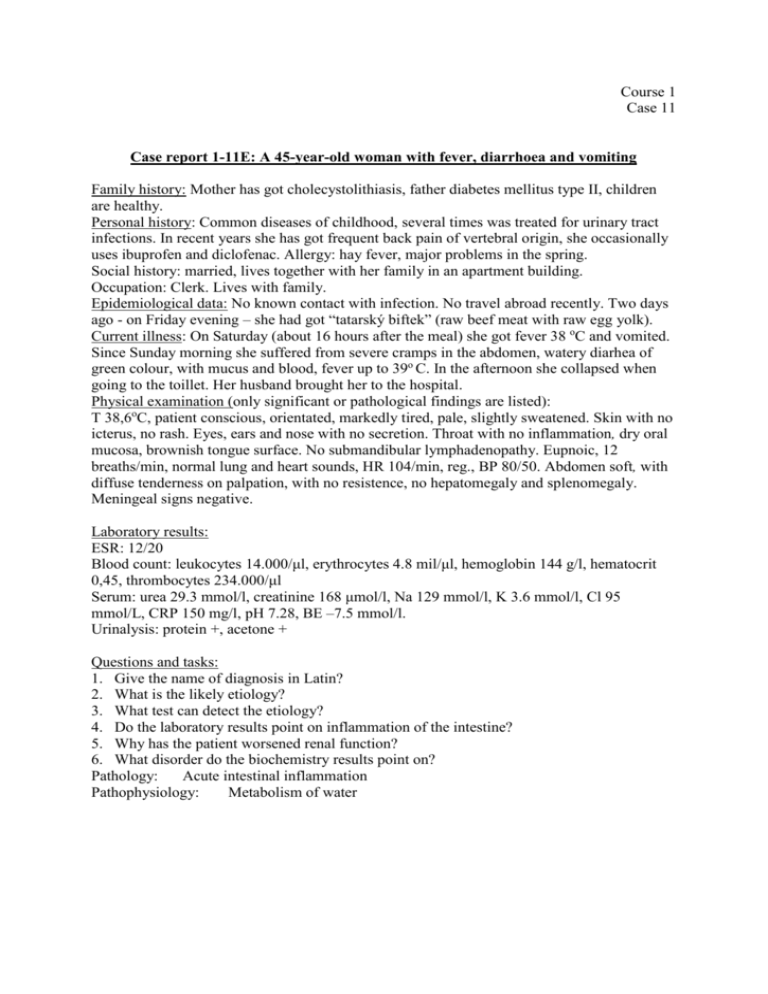
Course 1 Case 11 Case report 1-11E: A 45-year-old woman with fever, diarrhoea and vomiting Family history: Mother has got cholecystolithiasis, father diabetes mellitus type II, children are healthy. Personal history: Common diseases of childhood, several times was treated for urinary tract infections. In recent years she has got frequent back pain of vertebral origin, she occasionally uses ibuprofen and diclofenac. Allergy: hay fever, major problems in the spring. Social history: married, lives together with her family in an apartment building. Occupation: Clerk. Lives with family. Epidemiological data: No known contact with infection. No travel abroad recently. Two days ago - on Friday evening – she had got “tatarský biftek” (raw beef meat with raw egg yolk). Current illness: On Saturday (about 16 hours after the meal) she got fever 38 oC and vomited. Since Sunday morning she suffered from severe cramps in the abdomen, watery diarhea of green colour, with mucus and blood, fever up to 39o C. In the afternoon she collapsed when going to the toillet. Her husband brought her to the hospital. Physical examination (only significant or pathological findings are listed): T 38,6oC, patient conscious, orientated, markedly tired, pale, slightly sweatened. Skin with no icterus, no rash. Eyes, ears and nose with no secretion. Throat with no inflammation, dry oral mucosa, brownish tongue surface. No submandibular lymphadenopathy. Eupnoic, 12 breaths/min, normal lung and heart sounds, HR 104/min, reg., BP 80/50. Abdomen soft, with diffuse tenderness on palpation, with no resistence, no hepatomegaly and splenomegaly. Meningeal signs negative. Laboratory results: ESR: 12/20 Blood count: leukocytes 14.000/μl, erythrocytes 4.8 mil/μl, hemoglobin 144 g/l, hematocrit 0,45, thrombocytes 234.000/μl Serum: urea 29.3 mmol/l, creatinine 168 μmol/l, Na 129 mmol/l, K 3.6 mmol/l, Cl 95 mmol/L, CRP 150 mg/l, pH 7.28, BE –7.5 mmol/l. Urinalysis: protein +, acetone + Questions and tasks: 1. Give the name of diagnosis in Latin? 2. What is the likely etiology? 3. What test can detect the etiology? 4. Do the laboratory results point on inflammation of the intestine? 5. Why has the patient worsened renal function? 6. What disorder do the biochemistry results point on? Pathology: Acute intestinal inflammation Pathophysiology: Metabolism of water
